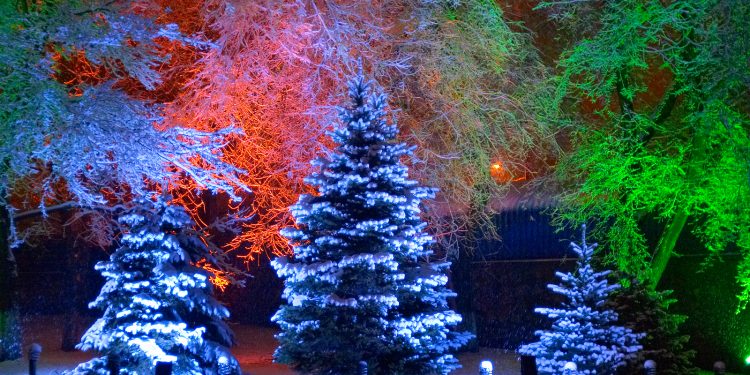One of Mexico’s principal attractions has, for ages, been its mixture of cultures and traditions, so that visitors and foreign residents can enjoy the unusual in a number of celebrations that are nevertheless quite familiar. Indigenous and Spanish traditions combined to give Mexico much of its unique nature.
The later expansion of U.S. culture —convenience, fast food, movies, music, video games— inevitably affected its neighbor Mexico, and the commercial exploitation of traditional holidays has also been a hit.
The trappings of Halloween have made inroads into the traditional Día de los Muertos or Day of the Dead celebrations. Few people bother writing “calaveras” —humorous epitaphs in rhyme— these days, but armies of children in fancy dress carrying jack-o-lanterns go knocking on doors and chanting “queremos Halloween” or “¿me da mi calaverita?”—less Mexican, perhaps, but more profitable all-round than the original plan. Stores stock up on imported pumpkins of all colors, shapes and sizes, while other Halloween paraphernalia adorn the shelves just long enough to be knocked-off by the incoming Christmas candy and toys.
Mexico has always been a country to assimilate foreign things without giving up its own identity, often putting a particularly Mexican stamp on them.
Roast turkey is eaten at Christmas but in addition to, not instead of, the traditional bacalao and romeritos.
Santa Claus has overtaken the Three Kings as the principal bringer of gifts, although both are popular among children. Before, the main time for “getting” was January 6, or Three Kings Day, and children would leave out shoes for the purpose. (Not that their “orders” would ever fit in a shoe.)
Now the sleighs, the bells, the reindeer, and the fir trees —in places where it never snows— are all the rage. By all means enjoy the winter scenes, but don’t forget to bring the piñatas.
This acceptance of imported ideas without giving up existing views has long been a characteristic of Mexico. It’s also apparent in the way political correctness has trickled into the country, particularly where it merely involves substituting one word for another to keep certain people from taking offense on behalf of others.
But while attitudes to many things are already changing with the younger online generations, people haven’t gone so far that they’re afraid to call Christmas Navidad or put up nativity scenes. There are alternatives: “felices fiestas” for “happy holidays,” “fiestas decembrinas” for “December celebrations,” and others; but even when these are used, you don’t get the impression people are trying to avoid falling foul of the separation of Church and State, or worrying that the Chinese may not like you calling it “New Year.”
Learn more about Christmas traditions in Mexico
Mexperience helps you to discover Christmas traditions in Mexico and enjoy all the country offers during this important festive period:
- Learn about preparing for Christmas and New Year in Mexico
- Dia de Guadalupe heralds the start of the end-of-year festivities in Mexico.
- Posadas Navideñas are an integral and essential part of Christmas traditions in Mexico.
- Enjoying Mexican party foods at Christmastime
- Colorful piñatas are an essential component of every Christmas party in Mexico.
- Discover the Mexican Christmas experience and festivities
- How the New Year is traditionally welcomed in Mexico.
- Kings’ Day gifts, delicious loaf, and the baby doll that determines who hosts the tamales party in February.
- Learn all about Christmas in Mexico on our feature section.
Mexico in your inbox
Our free newsletter about Mexico brings you a monthly round-up of recently published stories and opportunities, as well as gems from our archives.









Great article! Just a clarification, turkey is originally from Mexico, guajolote, and it has been a Christmas tradition for centuries.